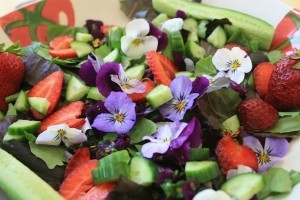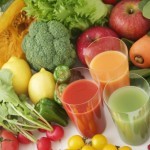Edible Flowers: Very Impressive and Nutritious
Edible flowers are a fun and an easy way to add color and flavor to all sorts of dishes.
Most edible flowers are best eaten raw–simply pick and rinse with water. Flowers will taste and look their best right after they have opened, rather than after they have been open for a few days.
There are two important things to remember about edible flowers: first is that not every flower is edible, and the second caution is to avoid flowers that may have been sprayed with an insecticide, fungicide or herbicide.
Here is a list of edible flowers:

Borage: This fuzzy-leaved herb has sky-blue flowers with a light cucumber taste. Add to fruit salads, green salads or freeze in ice cubes for cold drinks.
Calendula: An easy and prolific edible flower that’s easy to grow from seed right in the garden. Separate the petals from the center of the flower and sprinkle the petals into salads. Colors range from pure yellow to orange and red.
Chamomile: English chamomile has small, daisy-like flowers with an apple-like flavor. If you’re allergic to ragweed, you might want to avoid chamomile.
Marigolds: Use the tiny flowers of signet marigolds, such as Lemon Gem and Tangerine Gem. Their blossoms have a citrus taste.
Nasturtiums: Blossoms have a peppery flavor like watercress. All colors and varieties are tasty in salads or as garnishes. Leaves can be eaten, too.
Pansies: These flowers have a wintergreen flavor and are pretty on cakes and other desserts.
Nothing says “gourmet” like a sprinkling of colorful flower petals in a salad, a handful of pansy petals on a birthday cake or a sautéed daylily bud in a stir fry. Edible flowers are a fun and an easy way to add color and flavor to all sorts of dishes.
I really liked this Article written by Linda Mix- Author of Herbs for Life: She provides a List of 60 Edible Flowers!
Daisies for Lunch: An Edible Flowers List
Here is Linda Mix’s Book too – Herbs for Life












